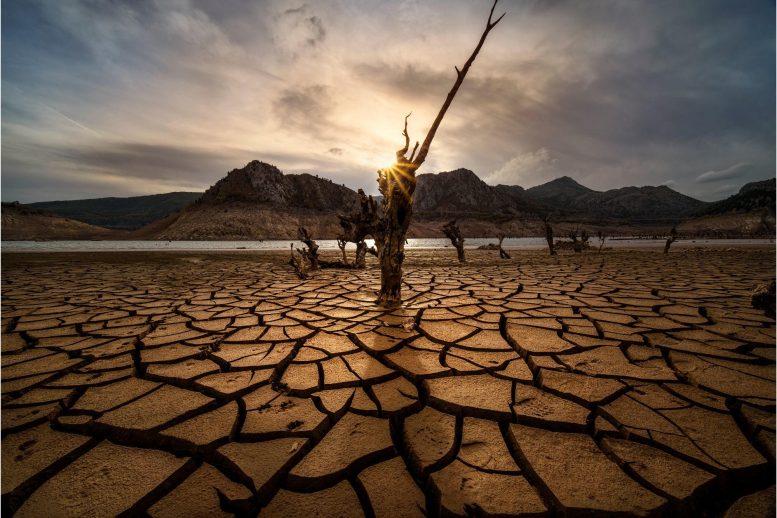
Flash droughts are sudden, intense droughts that occur rapidly and unexpectedly, often within a matter of weeks or months. Unlike traditional droughts, which are usually caused by a lack of rainfall over a prolonged period, flash droughts result from a combination of factors such as high temperatures, low soil moisture, and strong winds. These droughts can have a devastating impact on agriculture, forestry, and water resources, and can result in significant economic losses.
According to recent research conducted by the University of Southampton, flash droughts have become more frequent as a result of human-induced climate change, and this trend is expected to intensify as the world continues to warm.
The research published in Science reveals that flash droughts, which emerge and intensify quickly, are becoming the “new normal” for droughts, making it more challenging to predict and prepare for their consequences.
Flash droughts can develop into severe droughts within a few weeks. They are caused by low precipitation and high evapotranspiration, which quickly depletes the soil of water. While they start quickly, the droughts can last for months, damaging vegetation and ecosystems, and triggering heat waves and wildfires.
A multinational group of researchers wanted to understand if there had been a transition from conventional ‘slow’ droughts to flash droughts and how this trend will develop under different carbon emission scenarios.
“Climate change has effectively sped up the onset of droughts,” says Professor Justin Sheffield, Professor of Hydrology and Remote Sensing at the University of Southampton and co-author of the paper.
“While it varies between different regions, there has been a global shift towards more frequent flash droughts during the past 64 years.”
The transition to flash droughts is most notable over East and North Asia, Europe, the Sahara, and the west coast of South America. Some areas, such as eastern North America, Southeast Asia, and North Australia, saw fewer flash and slow droughts, but the speed of drought onset had increased. In the Amazon and West Africa, there was no evidence of a transition to flash droughts; the Amazon saw an increase in slow droughts and West Africa saw an increase in the frequency and extremity of both fast and slow droughts.
Professor Justin Sheffield added: “As we head towards a warmer future, flash droughts are becoming the new normal. Our models show that higher-emission scenarios would lead to a greater risk of flash droughts with quicker onset which pose a major challenge for climate adaptation.”
The transition to flash droughts may have irreversible impacts on ecosystems as they may not have enough time to adapt to a sudden lack of water and extreme heat. Forecasting flash droughts is also difficult as current approaches to predicting droughts use longer time scales.
The researchers say new approaches are needed to provide early warnings of flash droughts, as well as a better understanding of how natural ecosystems and humans will be impacted.
Reference: “A global transition to flash droughts under climate change” by Xing Yuan, Yumiao Wang, Peng Ji, Peili Wu, Justin Sheffield and Jason A. Otkin, 13 April 2023, Science.
DOI: 10.1126/science.abn6301
The study was funded by the National Natural Science Foundation of China, the Natural Science Foundation of Jiangsu Province for Distinguished Young Scholars, the National Key Research and Development Program of China, and the Newton Fund.









They’re saying that the start of droughts, where it stops raining, is happening even more suddenly than back when it used to just stop raining? And this drastic change is now affecting everywhere on Earth, except the Amazon rain forest, and the West African rain forest? They say the Sahara desert is experiencing these flash droughts due to climate change? Oh no! I’d heard police seized 3.7 tonnes of cocaine in Southhampton last week, but who will protect our acedemic journals from these tweaking scummers?
“Forecasting flash droughts is also difficult as current approaches to predicting droughts use longer time scales.”
I’d suggest that if it is difficult to predict ‘flash droughts,’ then the claimed trend is probably spurious.
Building models is more of an art than a science. Typically, one tweaks the parameters until they get what they think is the right behavior. That leads to subjectivity playing a far too important role.